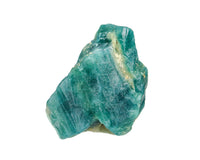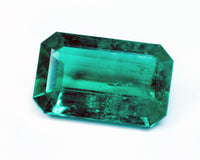- 1. Jasper
- 2. The History and Meaning of Jasper
- 3. Chemical and Physical Properties of Jasper
- 4. Varieties of Jasper
- 4-1. Red Jasper
- 4-2. Green Jasper
- 4-3. White Jasper
- 4-4. Yellow Jasper
- 4-5. Blue Jasper
- 4-6. Zebra Jasper
- 4-7. Bumblebee Jasper
- 4-8. Crocodile Jasper (Kambaba Jasper)
- 4-9. Ocean Jasper
- 4-10. Picture Jasper
- 4-11. Brecciated Jasper
- 5. Metaphysical Properties and Healing Properties of Jasper
- 6. Jasper for Sale by KenKenGems
Jasper
There is no other gemstone that would be superior to jasper in a variety of colors and patterns. The stone, which is the child of volcanoes and ancient oceans, has absorbed all the beauty of nature.
The History and Meaning of Jasper
Jasper is a variegated stone, and this is how its name is translated from Ancient Greek. Historically, the mineral had many monikers - Swiss lapis, basanite, tiger stone, etc. Our ancestors believed that the gem promoted vitality and helped achieve unity with nature.
The Ancient Chinese regarded the stone as a symbol of secrets. Emperors adorned themselves with jasper jewelry and warriors inserted it into helmets and sword hilts. Chinese healers used jasper to cure diseases common for females and to stop bleeding.
Priests and shamans of various civilizations had jasper talismans to ensure protection from misfortunes and demons. The ancient Egyptians carved amulets and placed them in the tombs of the dead for safe travel to another world. They endowed jasper with magical properties that were supposed to drive away evil. For this reason, jasper was frequently found in the houses of Egyptians in the form of dishes, figurines, amulets, etc.
In ancient Greece, the stone was valued as a powerful amulet for children and their parents. The renowned physician Hippocrates utilized jasper to fight epilepsy and fever, and Roman healers counted on it to accelerate recovery. In the Middle Ages, jasper had the meaning of a sacred mineral.
Chemical and Physical Properties of Jasper
Jasper is a cryptocrystalline sedimentary or volcanogenic-sedimentary rock that has undergone metamorphism. Approximately 80% of its content is taken by quartz. Besides, the siliceous rock features a broad variety of impurities and admixtures that provide a multitude of colors and patterns. The most common of them are iron oxide and hydroxide, epidote, manganese, actinolite, amphibole, prehnite, magnetite, clay mineral formations, etc.
Jasper formed millennia ago when the surface of the Earth was covered with prehistoric seas and mighty volcanoes. Volcanic ash got mixed with silt rich in iron and manganese oxides, green chloride salts, blue silicates, etc. Gradually, the seas dried up, and the sediments fossilized. This is how this diverse mineral was born.
The stone is fairly hard (7.0 on the mineral hardness scale), dense, opaque, and with a low degree of refraction. To reveal its patterns in all their glory, jasper is cut en cabochon. Polished specimens have a glassy luster.
Varieties of Jasper
Jasper can have any base color and combination of tints. Most frequently, the stone is available in these colors:
Red Jasper
•Red jasper is one of the most popular solid-colored minerals, although it can also show various blotches, patches, and flows. The red color is due to the hematite content.
Green Jasper
•Green jasper is found in virtually every shade of this color. Most often, coloration is not uniform. It displays transitions from one shade to another, dark and light stripes, hairy inclusions, layers of different colors, etc.
White Jasper
•White jasper of natural origin is very rare. It’s worth getting one of these gems because of their stripy or banded patterns.
Yellow Jasper
•Yellow jasper exhibits colors from light honey to mustard. It picks up its colors from inclusions of goethite and iron oxide.
Blue Jasper
•Blue jasper is hard to come by. Its color is produced by manganese oxide in its content.
More often than not, the color of the stone isn’t uniform. It is adorned with some kind of pattern, and these patterns come in a great many varieties. We listed the most notable of them below:
Variegated jasper has the largest variety of patterns comprised of dots and spots. The multi-colored "grain" of this type is due to inclusions of quartz, hematite, garnet, etc.
Banded jasper features a multi-colored layered structure. Sometimes, the colors are so vibrant that a piece of jasper resembles a delicious cake or rainbow jelly.
One of the popular varieties of mottled jasper is Dalmatian. It is predominantly white with many black spots of irregular shapes placed throughout a stone.
If you like spots but prefer something a little more dramatic and even predatory, your choice is Leopard Jasper (alternatively known as Jaguar Stone). It has many spots of various colors located on a fancy background made up of stripes, streaks, and bands.
Zebra Jasper
Zebra Jasper is another variety of the mineral, which appearance mimics animal fur. Zebra stones are white with black stripes.
Bumblebee Jasper
Bumblebee jasper has arsenic and manganese oxide inclusions that provide stripes or circular patterns that resemble bumblebees.
Crocodile Jasper (Kambaba Jasper)
Crocodile jasper (Kambaba jasper) features inclusions of fossilized algae that are arranged in circles. Its colors are earthy green, yellow, brown, etc.
Ocean Jasper
Ocean jasper is a translucent variety of the stone, which conveys the beauty of prehistoric oceans. It features nodules resembling orbs, circles, and bands formed by sedimentary elements. Ocean jasper is undeniably striking.
Picture Jasper
Picture jasper showcases landscapes drawn by the nature itself. These stones are predominantly brown with banding, veining, and flow patterns.
Brecciated Jasper
Brecciated jasper is comprised of numerous colored layers provided by the mineral hematite. The variety of Brecciated jasper called Poppy exhibits spots and speckles of white, black, and brown, and their arrangement resembles poppies.
Besides jasper that is actually jasper, the same name is often mistakenly applied to other minerals. For instance, blood jasper is actually heliotrope (bloodstone), Picasso jasper is metamorphic limestone, Imperial jasper is actually variscite, black jasper is, in fact, basanite, and so on.
Metaphysical Properties and Healing Properties of Jasper
In antiquity, jasper was a popular remedy for vision-related diseases. It was also endowed with the power of protection against the evil eye. For this reason, it wasn’t uncommon to see jasper amulets in houses. In temples, jasper was found in flooring since this stone was considered divine. Sorcerers kept magical items and ingredients for potions in boxes made of this mineral. The stone made it possible to perform rituals even if a person for whom they were intended is not around. An object that belongs to this person or their portrait should be placed either in a jasper frame or inside a circle made of jasper stones.
Jasper is a source of good vibrations. Objects made of this stone cannot harm their owner. All jasper items and jewelry act as an amulet. They bring happiness, peace, and understanding to one’s home.
Red jasper is able to treat diseases common for women. Along with that, wearing a stone in the abdomen area helps improve the functioning of the gastrointestinal tract and kidneys.
Jasper for Sale by KenKenGems
We could talk about jasper for ages but it’s best that you look at it with your own eyes and hold it in your hands to appreciate its unprecedented beauty. We deliver many fancy varieties of the stone – picture, Dalmatian, ocean, poppy, just to name a few. You can take benefit from jasper beads, loose stones, individual pieces, pendants in precious metals, and many other varieties. All this magnificence and diversity is very budget-friendly.
















